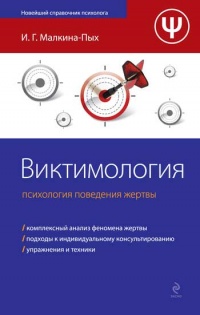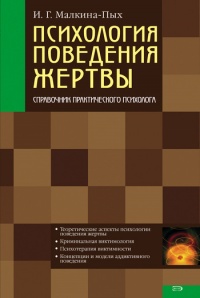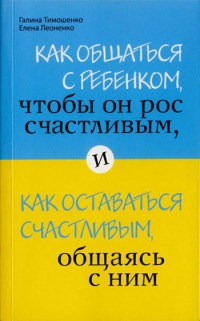Книга Больная любовь. Как остановить домашнее насилие и освободиться от власти абьюзера - Джесс Хилл
Шрифт:
Интервал:
Закладка:
2. John Gottman and Neil Jacobson, When Men Batter Women: New insights into ending abusive relationships, Simon & Schuster, 1998.
3. Ibid., p. 89.
4. Ibid., pp. 90, 92.
5. Ibid., p. 74.
6. Ibid., pp. 114–16.
7. Ibid., p. 110.
8. Ibid., pp. 93–6.
9. Ibid., p. 86.
10. Ibid., p. 90.
11. Ibid., p. 93.
12. Ibid., p. 38.
13. Ibid., p. 30.
14. Emily Esfahani Smith, ‘Masters of Love’, The Atlantic, 12 June 2014.
15. J. C. Babcock, C. E. Green, S. A. Webb & K. H. Graham, ‘A second failure to replicate the Gottman et al. (1995) typology of men who abuse intimate partners… and possible reasons why’, Journal of Family Psychology, 1995, 18(2), pp. 396–400; J. C. Meehan, A. Holtzworth-Munroe & K. Herron, ‘Maritally violent men’s heart rate reactivity to marital interactions: A failure to replicate the Gottman et al. (1995) typology’, Journal of Family Psychology, 2001, 15(3), pp. 394–408.
16. A. Holtzworth-Munroe & G. L. Stuart, ‘Typologies of male batterers: Three subtypes and the differences among them’, Psychological Bulletin, 1994, 116(3), pp. 476–97.
17. Data from the Gun Violence Archive cited in Sam Morris and Guardian US interactive team, ‘Mass shooting in the US’, The Guardian, 16 February 2018.
18. Rebecca Traister, ‘What mass killers really have in common’, New York Magazine, 15 July 2016.
19. Jane Wangmann, Different Types of Intimate Partner Violence – an exploration of the literature, Domestic Violence Clearinghouse, October 2011.
20. David Gadd & Mary-Louise Corr, ‘Beyond typologies: Foregrounding meaning and motive in domestic violence perpetration’, Deviant Behavior, 2017, 387, pp. 781–91.
21. Ibid.
22. Quoted in Allan J. Tobin & Jennie Dusheck, Asking about Life, Cengage Learning, 2005 p. 819.
23. Kirsten Tillisch et al., ‘Structure and response to emotional stimuli as related to gut microbial profiles in healthy women’, Psychosomatic Medicine, October 2017, 79(8), pp. 905–13.
24. Mark Patrick Taylor et al., ‘The relationship between atmospheric lead emissions and aggressive crime: An ecological study’, Environmental Health, February 2016, 15(23).
25. Corrine Barraclough, ‘Domestic violence: Where are the realists?’ The Spectator Australia, 12 April 2017.
26. E. W. Gondolf, ‘Characteristics of court-mandated batterers in four cities: Diversity and dichotomies’, Violence Against Women, 1999, 5(11), pp. 1277–93.
27. S. M. Stith et al., ‘The intergenerational transmission of spouse abuse: A meta-analysis’, Journal of Marriage and the Family, 1999: 62(3), pp. 640–54.
28. Bancroft, Why Does He Do That?
29. C. L. Yodanis, ‘Gender inequality, violence against women, and fear: A cross-national test of the feminist theory of violence against women’, Journal of Interpersonal Violence, 2004, 19(6): pp. 655–75; L. L. Heise & A. Kotsadam, ‘Cross-national and multilevel correlates of partner violence: An analysis of data from population-based surveys’, Lancet Global Health, 2015.
30. The Hon. Malcolm Turnbull MP, Prime Minister, ‘Transcript of Joint Press Conference: Women’s Safety Package to Stop the Violence’, 24 September 2015.
31. Melanie F. Shepard & Ellen L. Pence, Coordinating Community Responses to Domestic Violence: Lessons from Duluth and beyond, SAGE Publications, 1999, p. 29.
32. E. Pence & S. Das Dasgupta, Re-Examining ‘Battering’: Are all acts of violence against intimate partners the same? Praxis International, Inc., June 2006.
1. Neil Websdale, Familicidal Hearts: The emotional styles of 211 killers, Oxford University Press, February 2010.
2. Bancroft, Why Does He Do That?, pp. 151–8.
3. Helen Block Lewis, Shame and Guilt in Neurosis, New York: International Universities Press, 1971.
4. H. B. Lewis, ‘The role of shame in symptom formation’ in M. Clynes & J. Panksepp (eds), Emotions and Psychopathology, Boston, MA: Springer, 1988.
5. R. L. Dearing, & J. P. Tangney (eds), Shame in the Therapy Hour, Washington, DC: American Psychological Association, 2011.
6. Christian Keysers, ‘Inside the mind of a psychopath – Empathic, but not always’, Psychology Today, July 2013.
7. Katie Heaney, ‘My life as a psychopath’, Science of Us, August 2018.
8. Donald L. Nathanson, Shame and Pride: Affect, sex, and the birth of the self, New York: Norton, 1992, p. 220.
9. Robert Karen, ‘Shame’, The Atlantic Monthly, February 1992, pp. 40–70.
10. Peter N. Stearns, Shame: A brief history, Urbana; Chicago; Springfield: University of Illinois Press, 2017.
11. The Tomkins Institute, ‘Nine affects, present at birth, combine with life experience to form emotion and personality’.
12. D. L. Nathanson (ed.), The Many Faces of Shame, New York: The Guilford Press, 1987, p. 21.
13. Jim Logan, For Shame: The Current, UCSB, February 2016.
14. Brené Brown, ‘Listening to Shame’, TED Talk, March 2012.
15. Donald L. Nathanson, Shame and Pride, pp. 303–78.
16. Ibid., p. 359.
17. Robert M. Sapolsky, Behave: The biology of humans at our best and worst, New York: Penguin, 2017.
18. Ibid.
19. Quoted in Jon Ronson, So You’ve Been Publicly Shamed, New York: Riverhead Books, 2015.
20. Penelope Green, ‘Carefully smash the patriarchy’, The New York Times, 18 March 2019.
21. James Gilligan, ‘Shame, guilt, and violence’, Social Research, 2003, 70(4), pp. 1149–80.
22. Alyssa Toomey, ‘Nigella Lawson choking incident: Photographer describes scene as «so violent»’, E! News (online), 9 January 2014.
23. James Gilligan, Violence: Reflections on a national epidemic, New York: Vintage Books, 1997, p. 111.
24. Judith Graham, Bulletin #4422, Violence Part 2: Shame and humiliation, University of Maine, 2001.
25. Germaine Greer, On Rage, Melbourne: Melbourne University Press, 2008
26. Michelle Jones, A Fight About Nothing: Constructions of domestic violence, PhD thesis, University of Adelaide, 2004.

























